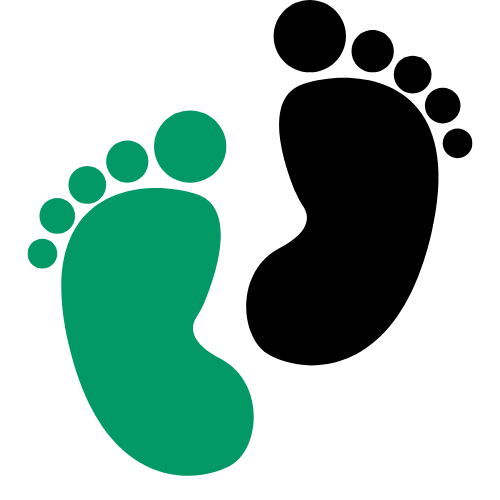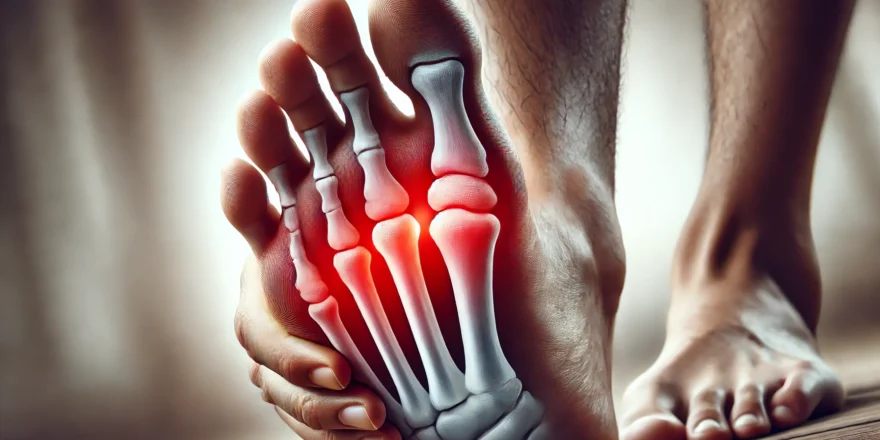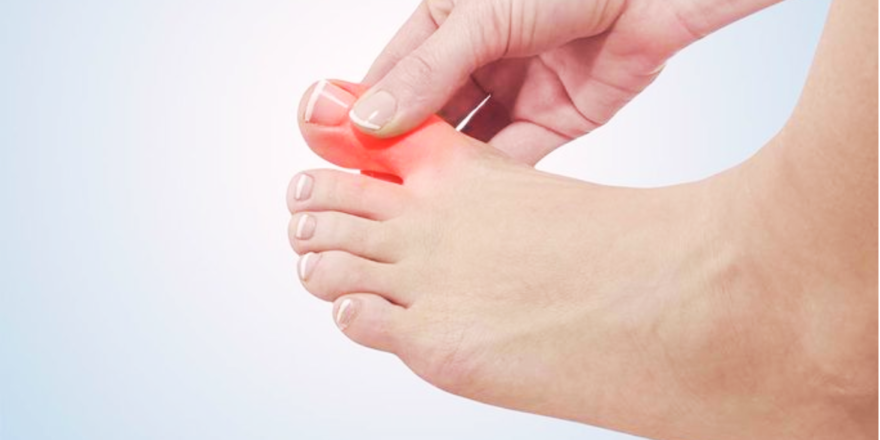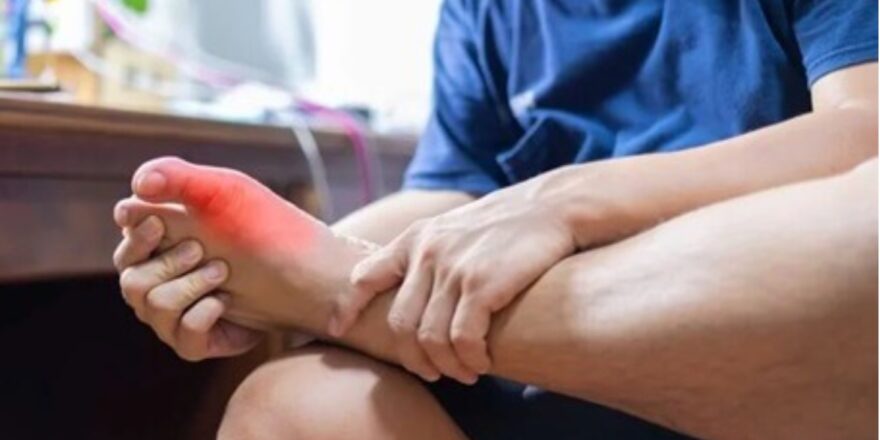Do you struggle with stiffness or pain in your big toe joint? If so, you might be dealing with Hallux Rigidus, a condition often misunderstood. Debunking Myths About Hallux Rigidus is crucial because many misconceptions surround this painful condition.
It’s commonly associated with older adults, the reality is that this issue can affect anyone, including young athletes and fitness enthusiasts. Knowing the truth about Hallux Rigidus is vital for effective prevention and management.
In this article, we’ll explore what Hallux Rigidus really is, debunk some common myths, and provide practical advice on how to manage and prevent it. Whether you’re an athlete, podiatrist, or just someone looking to learn more about foot health, this guide is for you.
What Is Hallux Rigidus?
Hallux Rigidus is a degenerative condition affecting the joint at the base of the big toe. The issue arises when the cartilage within the joint gradually deteriorates, leading to pain, stiffness, and inflammation. Over time, the joint’s ability to bend and move becomes increasingly restricted, which can significantly impact balance and mobility.
Causes:
- Genetics: If your family has a history of Hallux Rigidus, you’re more likely to develop it.
- Trauma: Injuries such as fractures or sprains can speed up joint degeneration.
- Overuse: Repetitive movements, especially in athletes, can stress the joint over time.
- Arthritis: Osteoarthritis is a leading cause, exacerbating joint stiffness and pain.
Symptoms:
- Persistent pain in the big toe joint, especially during movement.
- Stiffness and reduced range of motion.
- Discomfort when wearing certain footwear.
- Swelling and inflammation around the joint.
If you suspect you’re experiencing these symptoms, it’s important to seek medical advice sooner rather than later. For a more detailed explanation of the causes and symptoms, consider exploring our in-depth guide here: Hallux Rigidus Causes, Symptoms & Treatment.
Debunking Common Myths About Hallux Rigidus
Myth #1: Hallux Rigidus Only Affects Older Adults
The Truth: While it is true that aging and arthritis are risk factors, Hallux Rigidus doesn’t discriminate by age. Athletes, dancers, and even young adults can develop this condition due to factors like repetitive stress or trauma.
Consider the case of Sarah, a 28-year-old runner who started experiencing pain and stiffness during her daily jogs. Diagnosed early, Sarah managed her condition with physical therapy and proper footwear, saving her from surgery. This highlights that while age can contribute, it’s not the sole factor.
Myth #2: Surgery Is the Only Treatment Option
The Truth: Surgery is often considered a last resort. Many non-surgical treatments are highly effective in alleviating symptoms and slowing down the progression of the condition. Some options include:
- Orthotics: Insoles can reduce pressure on the big toe joint.
- Physical Therapy: Strengthening exercises improve flexibility and reduce stiffness.
- Anti-inflammatory Medications: Over-the-counter NSAIDs help manage pain and inflammation.
- Footwear Modifications: Shoes with a wide toe box and stiff soles can provide significant relief.
These treatments often work well and can help avoid the risks and downtime associated with surgery. Learn more about these approaches here: Best Shoes for Hallux Rigidus.
Myth #3: It Won’t Impact Athletic Performance
The Truth: Athletes often underestimate the effect of Hallux Rigidus. Limited mobility in the big toe joint can disrupt balance, reduce power during push-offs, and even cause compensation injuries in other parts of the body. Sports like running, soccer, and tennis are especially challenging for those with this condition.
However, with the right treatment plan—including custom orthotics, modified training routines, and preventive exercises—it’s entirely possible to continue excelling in sports.
Managing and Preventing Hallux Rigidus
Prevention and effective management can go a long way in improving quality of life and minimizing discomfort. Here’s how:
A. Protecting Your Feet as an Athlete
- Invest in Proper Footwear: Shoes with adequate arch support, cushioned soles, and a roomy toe box can help prevent strain on the big toe joint.
- Warm-Up and Stretch: Target the feet and toes during your warm-up routine to improve joint flexibility.
- Schedule Recovery Time: Overuse is a significant risk factor, so be sure to give your feet time to recover between intense activities.
For a curated list of shoes tailored for Hallux Rigidus, check out our recommendations here: Best Shoes for Hallux Rigidus.
B. Rehabilitation and Exercises
Rehabilitation can significantly improve symptoms and maintain mobility. Try these exercises:
- Toe Extensions: Gently stretch your big toe backward to improve flexibility.
- Marble Pickup: Using your toes, pick up small objects to strengthen foot muscles.
- Resistance Band Stretch: Use a resistance band to strengthen and stretch the affected joint.
These simple exercises can be done at home and often yield noticeable results.
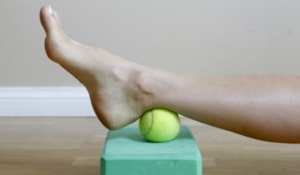
C. Seek Professional Advice
If you notice persistent pain, stiffness, or swelling in your big toe joint, consult a podiatrist or orthopedic specialist. Early diagnosis can prevent the condition from worsening and may even eliminate the need for invasive treatments.
Real Stories, Real Solutions
Meet John, a 34-year-old cyclist whose Hallux Rigidus threatened to derail his career. After consulting a podiatrist, he began using a custom orthotic and incorporated strengthening exercises into his routine. Within three months, John was back on the bike and performing better than before.
Sarah, a dancer, faced similar challenges. She opted for physical therapy and switched to specialized shoes, which allowed her to continue pursuing her passion without surgery.
Their stories prove that with early intervention and dedication, Hallux Rigidus doesn’t have to hold you back.
Conclusion
Hallux Rigidus can be challenging, but with the right knowledge and approach, it’s entirely manageable. Don’t ignore early symptoms, and be proactive about protecting your joint health. Whether you’re an athlete or someone who values mobility and comfort, there are plenty of proven strategies to keep you active and pain-free.
If you found this guide helpful, share it with others who might benefit! Need personalized advice? Drop your questions in the comments or explore more of our expert resources.
Your feet are your foundation—take care of them.

